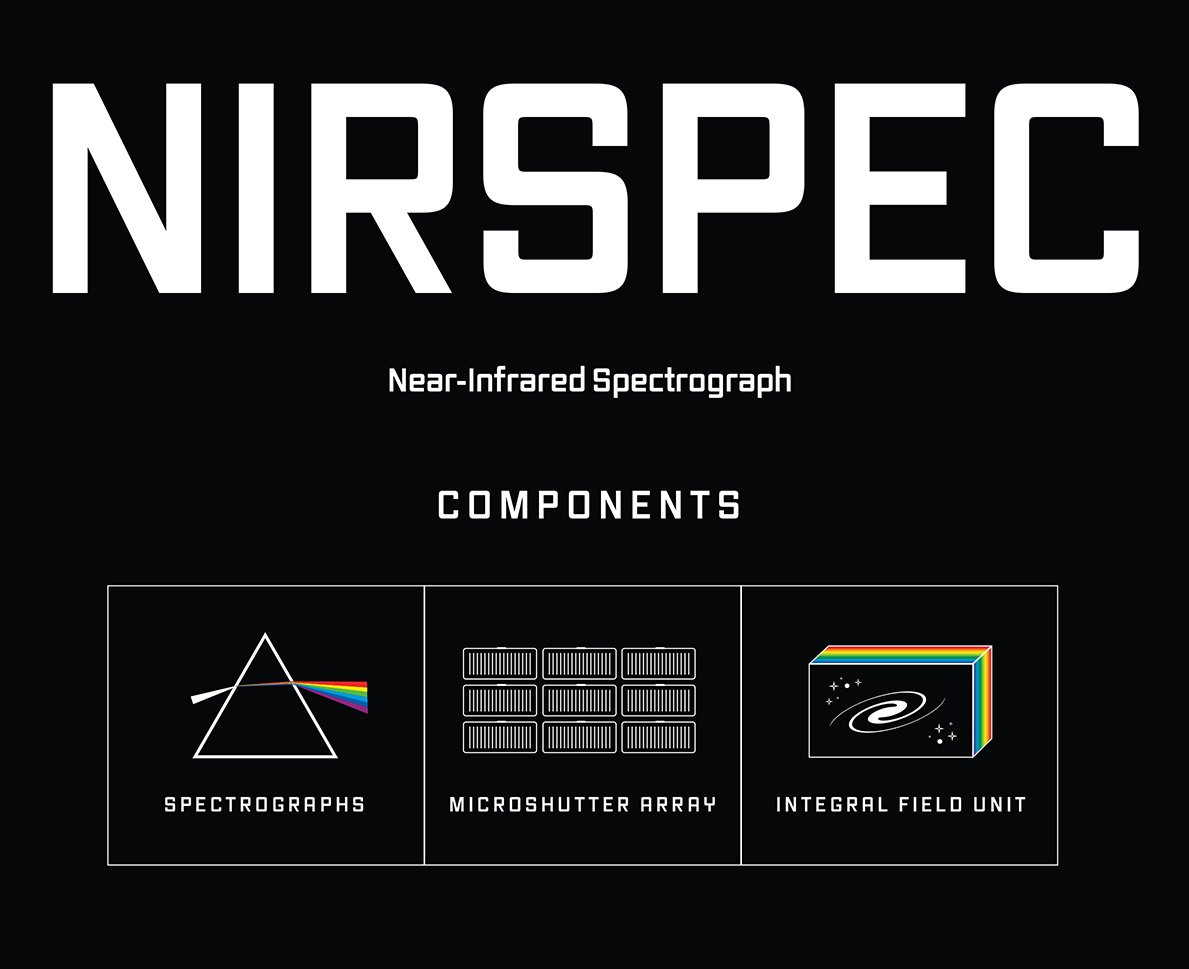
Lead Image: Webb’s view of the extremely red quasar SDSS J165202.64+172852.3. The quasar SDSS J165202.64+172852.3 is depicted here by the NASA/ESA/CSA James Webb Space Telescope to demonstrate the distribution of gas around the object. This visual shows a quasar composed of four narrow-band images together, which appears as a burred rainbow blotch of colors. Credit: ESA/Webb, NASA, CSA, D. Wylezalek, A. Vayner and the Q3D Team
Webb Space Telescope Uncovers Dense Cosmic Knot in the Early Universe
NASA’s Webb Space Telescope continues its search into the earliest times of our universe, revealing the surprising formation of a massive galaxy cluster around a powerful, red quasar.
Astronomers looking into the early universe using NASA’s James Webb Space Telescope have made a surprising discovery: a cluster of massive galaxies in the process of forming around an extremely red quasar. Our understanding of how galaxy clusters in the early universe came together and formed the cosmic web we see today will expand as a result of this research.
A quasar, a special type of active galactic nucleus (AGN), is a compact region with a supermassive black hole at the center of a galaxy. Gas falling into a supermassive black hole makes the quasar bright enough to outshine all of the stars in the galaxy combined.

SDSS J165202.64+172852.3, the identifier given to the quasar Webb explored, existed 11.5 billion years ago. It is extraordinarily red not just because of its intrinsic red color, but also because the galaxy’s light has been redshifted by its vast distance. Because of this, Webb is perfectly suited to examine the galaxy in detail with its unparalleled sensitivity in infrared wavelengths.
This quasar is one of the most powerful known galactic nuclei that’s been seen at such an extreme distance. Astronomers had speculated that the quasar’s extreme emission could cause a “galactic wind,” pushing free gas out of its host galaxy and possibly greatly influencing future star formation there.
To investigate the movement of the gas, dust, and stellar material in the galaxy, the team used the telescope’s Near Infrared Spectrograph (NIRSpec). Using a technique called spectroscopy, this powerful instrument looked at the movement of various outflows and winds surrounding the quasar. NIRSpec can simultaneously gather spectra across the telescope’s whole field of view, instead of just from one point at a time, enabling Webb to simultaneously examine the quasar, its galaxy, and the wider surroundings.

Studies previously conducted using NASA’s Hubble Space Telescope and other observatories called attention to the quasar’s powerful outflows, and astronomers had speculated that its host galaxy could be merging with some unseen partner. However, the team was not expecting Webb’s NIRSpec data to clearly indicate it was not just one galaxy, but at least three more swirling around it. Thanks to spectra over a broad area, the motions of all this surrounding material could be mapped, resulting in the conclusion that the red quasar was in fact part of a dense knot of galaxy formation.
“There are few galaxy protoclusters known at this early time. It’s hard to find them, and very few have had time to form since the big bang,” said astronomer Dominika Wylezalek of Heidelberg University in Germany, who led the study with Webb. “This may eventually help us understand how galaxies in dense environments evolve. It’s an exciting result.”

Using the observations from NIRSpec, the team was able to confirm three galactic companions to this quasar and show how they are connected. Archival data from Hubble hint that there may be even more. Images from Hubble’s Wide Field Camera 3 had shown extended material surrounding the quasar and its galaxy, prompting its selection for this study into its outflow and the effects on its host galaxy. Now, the team suspects they could have been looking at the core of a whole cluster of galaxies – only now revealed by Webb’s crisp imaging.
“Our first look at the data quickly revealed clear signs of major interactions between the neighboring galaxies,” shared team member Andrey Vayner of Johns Hopkins University in Baltimore, Maryland. “The sensitivity of the NIRSpec instrument was immediately apparent, and it was clear to me that we are in a new era of infrared spectroscopy.”
The three confirmed galaxies are orbiting each other at incredibly high speeds, an indication that a great deal of mass is present. When combined with how closely they are packed into the region around this quasar, the team believes this marks one of the densest known areas of galaxy formation in the early universe. “Even a dense knot of dark matter isn’t sufficient to explain it,” Wylezalek says. “We think we could be seeing a region where two massive halos of dark matter are merging together.” Dark matter is an invisible component of the universe that holds galaxies and galaxy clusters together, and is thought to form a “halo” that extends beyond the stars in these structures.

The study conducted by Wylezalek’s team is part of Webb’s investigations into the early universe. With its unprecedented ability to look back in time, the telescope is already being used to investigate how the first galaxies were formed and evolved, and how black holes formed and influenced the structure of the universe. The team is planning follow-up observations into this unexpected galaxy proto-cluster, and hope to use it to understand how dense, chaotic galaxy clusters like this one form, and how it’s affected by the active, supermassive black hole at its heart.
These results will be published in The Astrophysical Journal Letters. This research was completed as part of Webb’s Early Release Science program #1335.
Reference: “First results from the JWST Early Release Science Program Q3D: Turbulent times in the life of a z∼3 extremely red quasar revealed by NIRSpec IFU” by
Dominika Wylezalek, Andrey Vayner, David S. N. Rupke, Nadia L. Zakamska, Sylvain Veilleux, Yuzo Ishikawa, Caroline Bertemes, Weizhe Liu, Jorge K. Barrera-Ballesteros, Hsiao-Wen Chen, Andy D. Goulding, Jenny E. Greene, Kevin N. Hainline, Nora Lützgendorf, Fred Hamann, Timothy Heckman, Sean D. Johnson, Dieter Lutz, Vincenzo Mainieri, Roberto Maiolino, Nicole P. H. Nesvadba, Patrick Ogle, Eckhard Sturm, Accepted, The Astrophysical Journal Letters.
arXiv:2210.10074
The James Webb Space Telescope is the world’s premier space science observatory. Webb will solve mysteries in our solar system, look beyond to distant worlds around other stars, and probe the mysterious structures and origins of our universe and our place in it. Webb is an international program led by NASA with its partners, ESA (European Space Agency) and CSA (Canadian Space Agency).




